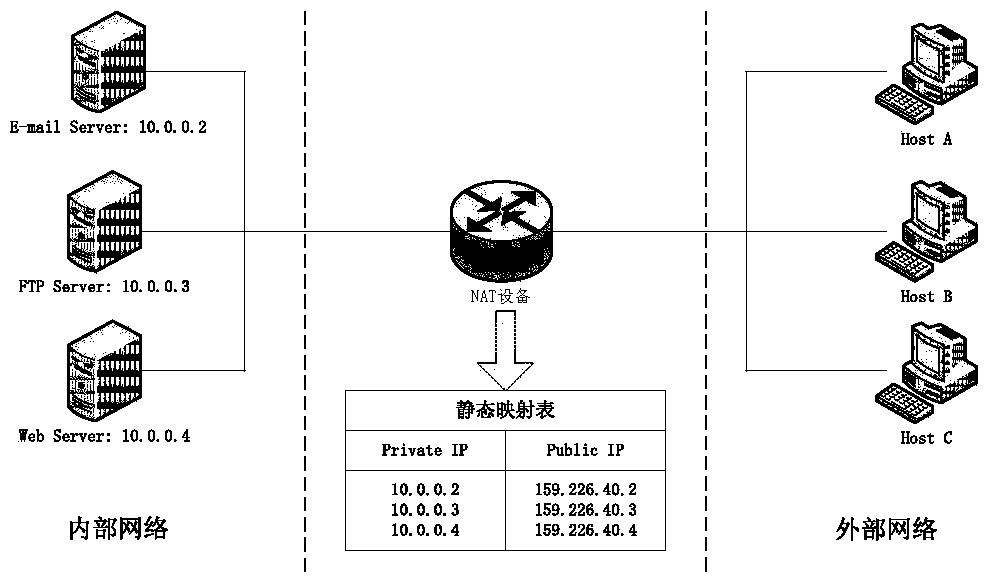A Distributed Network Address Translation System
A distributed network and address translation technology, applied in the field of distributed network address translation NAT systems, can solve problems such as wasted network bandwidth, insufficient network bandwidth, and low load on NAT devices.
- Summary
- Abstract
- Description
- Claims
- Application Information
AI Technical Summary
Problems solved by technology
Method used
Image
Examples
Embodiment 1
[0052] The invention provides a distributed network address translation NAT system, which is suitable for the NAT environment including one or more different public IP resources, and the system includes an access layer, a multiplexing layer and a control layer. The architecture of the system is as Figure 5 As shown in the figure, the access layer is close to the intranet host and provides a transparent access environment for the upper application intranet host. The multiplexing layer aggregates system resources so that resources can be shared. The control layer implements system configuration and resource allocation.
[0053] The node in the access layer is an access server, which is recorded as an access point AP (Access Point); the AP has the functions of communicating with the host on the internal network and address translation. The access layer includes one or more access points AP.
[0054] The nodes in the multiplex layer are multiplex servers, which are recorded as...
Embodiment 2
[0066] In this embodiment, aiming at the solution provided in Embodiment 1, in order to solve the problem of route selection and session consistency in the distributed NAT system, the function of the distributed NAT system is extended.
[0067] Fine-grained public IP address allocation
[0068]The traditional NAT system monopolizes a single public IP address. The distributed NAT system in this embodiment reduces the allocation granularity of public IP addresses to the port level in consideration of the shortage of public IP addresses. For example: for a specific public IP address, there are [a,b] a total of (b-a+1) ports available, the distributed NAT system divides a single public IP address into [a,x] according to the upper application requirements and [x+1,b] two segments (a≤x<b), which are assigned to different LAN environments. This method reduces the distribution granularity of public IP addresses, and is an effective method to solve the problem of Internet access when ...
Embodiment 3
[0086] On the basis of the solutions provided in Embodiment 1 or Embodiment 2, this embodiment provides a data interaction mode between nodes at the access layer, the multiplexing layer, and the control layer.
[0087] Among them, nodes in the access layer, multiplexing layer, and control layer use three types of data streams for data interaction, and the three types of data streams are public IP submission streams, public IP acquisition streams, and system data streams; system data streams include configuration stream, log stream and business data stream. The direction, trigger mode and content of each data flow are shown in Table 3.
[0088] table 3
[0089]
[0090]
[0091] The processing process and steps of each data stream are as follows:
[0092] Public IP submission flow:
[0093] The public IP submission flow is a way to maintain resources within the system. The data direction of the public IP submission flow is from the multiplexing point MP to the resourc...
PUM
 Login to View More
Login to View More Abstract
Description
Claims
Application Information
 Login to View More
Login to View More - R&D
- Intellectual Property
- Life Sciences
- Materials
- Tech Scout
- Unparalleled Data Quality
- Higher Quality Content
- 60% Fewer Hallucinations
Browse by: Latest US Patents, China's latest patents, Technical Efficacy Thesaurus, Application Domain, Technology Topic, Popular Technical Reports.
© 2025 PatSnap. All rights reserved.Legal|Privacy policy|Modern Slavery Act Transparency Statement|Sitemap|About US| Contact US: help@patsnap.com



